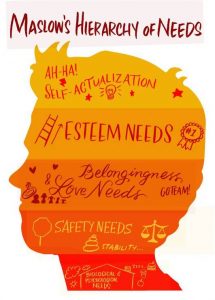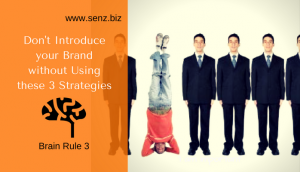- Home /
- strategy
Are Visionary Leaders dying out?

Is visionary leadership for business gurus only? Or can it be for anyone running day-to-day business? Being visionary means creating and conveying an appealing sense of purpose. It is about winning the hearts and minds of your employees. This is something you can learn. In this article you read how.
In summary, this is what visionary leaders do:
Create a shared purpose. You cannot expect your team to be innovative and change if they do not know the direction in which they are headed. It is up to the leader to set the course and give a bearing for the future. You need to make sure that you can paint a clear picture, that it is concise, easy to understand and inspiring. This is the first step to win the hearts of your team.
Make it comfortable for their team to follow the new direction. Change is always uncomfortable. Your brain loves to follow the well known routes. This helps you greatly in daily life. For example, you will immediately pull away your hand when you coincidentally touch something really hot. However, your brain protests when you want to make a change. So, secondly, you need to make it easy for your team to follow your strategy. You need to win their heads, too
Let me share some more details.
4 MUST-DO’S to be a visionary leader
1 KNOW YOUR FACTS AND FIGURES
In order to create a vision, you first need to know where you are now. This means that you need to first gather baseline information. How?
– Talk with people at all levels of your organization. Ask: What do you think our current state is? How are we doing? What do we need?
– Closely observe your day-to-day business to identify what can be improved
– Collect all market insights & trends. What is currently happening in your market? What is the role & behavior of each of the stakeholders (competitors, buyers, influencers, government, etc.)? What about your own company’s role and behavior? What is happening?
– Collect and evaluate all financial information. Look at your performance and productivity markers.
– Take intentional actions to identify patterns and discover new opportunities, like studying other industries and attending events outside of your area of expertise.
Share your findings with your team to check your conclusions and get them engaged.
2 CREATE YOUR PURPOSE

Leaders who gather facts and figures develop a gut sense for critical long-term versus short-lived changes. Together with the answers to the following questions, those insights will assist in imaging what might be possible for your organization.
Consider your market and all players. And ask yourself:
– What is missing in this market? What is not fitting?
– What would you like to change, solve or complement?
– How can you solve the problems of your target group?
Once you have a basic vision, test it out on others. Ask early adopters and criticasters: ‘what could possibly go wrong with this thinking? What haven’t I thought about?’
Using this strategy, you can test out your vision and identify potential challenges while taking early strides toward gaining supporters.
3 COMMUNICATE WITH ENERGY AND COURAGE
If you want to inspire people to innovate, to change the way they do things and to achieve extraordinary results then you have to be passionate; passionate about what you believe in. You have to communicate that passion every time you speak.
The active support and participation of others can greatly accelerate your vision, while the lack of support can make even the best ideas irrelevant.
Focus on the things that you want to change, the most important challenges you face and be passionate about overcoming them. Your energy and drive will translate itself into direction and inspiration for your people.
4 PERSONIFY YOUR VISION.
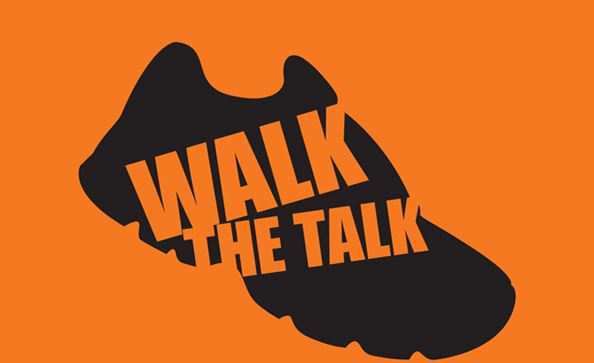
Once your team is on board with (and fully understands) your vision and the steps necessary to get there, you must live everyday with intent to personify your vision.
Everything you do, even little things, should be done with the intent to execute your vision. In other words, BE the vision you want to see. This will significantly impact how your team works. They will begin to work with intent, too.
Along with practicing what you preach, it’s important to be an inspirer for your employees.
Want to learn more about how to establish this in your organization? Book a free strategy session.
By using the skills above, you can become a visionary leader.
Visionary leaders are the best to be and have because they can see the result long before it happens.
With visionary greetings,
Karin van Zuilen
Senz – innovation & change management, www.senz.biz
p.s. Want more strategies to improve your team performance? Click here to get access to the 5 steps to improve your team performance
10 easy ways to increase your credibility

Brain Rule 4 – to be trusted and increase your revenues
‘I just don’t trust this clinic. I had a bad experience with this company’. ‘I still need to think whether I should go with this brand OR ‘I recommend this brand to everybody’. ‘It was a very easy decision to choose this product’. How can you move from one set of reactions to the other? Use brain Rule 4.
It’s clear that your client can benefit of your offer. Your anti-aging therapy clearly offers what the client is asking for. Your training delivers the education your customer needs.
And still…. your client does not buy. It seems to take ages before they take a decision. What’s going on?
It could well be that they (subconsciously or not) have doubts whether you indeed will deliver what you have promised. The feeling of safety and security is one of peoples’ basic needs. And it is one of the triggers that makes our reptilian brain take action.
You first need to create a setting where clients feel safe, to make them trust you. It will be much easier for them to buy (and keep buying) your product.
Brain Rule 4 says: Establish a Safe Setting
Brain Rule 4 is very closely related to the human need for safety, according to Maslow’s hierarchy of needs. This is a theory of motivation in psychology developed by Abraham Maslow. Maslow believed people move through different stages of five needs that motivate our behavior. He called these needs physiological, safety, love, esteem, and self-actualization.
I refer to them as the 5S-needs to touch the heart and brain of people: Survival, Safety, Social Belonging, Self esteem and Self actualization.
The need for safety has to do with our natural desire for a predictable, orderly world that is somewhat within our control. In order to fulfill this need, you need to apply Brain Rule 4.
10 easy ways to establish a safe setting &
increase your credibility (and revenues)
1. Be who you are. Do the things that belong to your company. Introduce products that fit into your portfolio, promote them the way you are: funny, serious, credible, fancy… Be authentic.
2. Make the total experience more personal. People trust people they know. That’s why networking and MLM companies do so well. People don’t trust strangers. Why would they?
Help your prospects get to know you. Share personal stories, show who is behind the idea/brand, use your own picture and name in brochures, online and in emails; a personal touch makes the difference.
3. Speak to your clients in an informal way, just like you do in your private life. Don’t be too corporate. If you are easily accessible (if clients feel they can talk to you), it’s easier to trust you.

4. Give clients the chance to sniff at you through an easily accessible acquaintance. Why would companies give free samples, share free information, or offer a free trial period? This helps prospects make informed decisions and feel safe.
Click here to receive my FREE client attraction course 😉
5. Give clients the chance to step-out if they don’t like it. Give them a Money back guarantee if your product does not work for them. This shows that you are not right after their money, but want to offer them value.
6. Send at least 7 consistent messages or try to call your prospects 7 times. To help a prospect take action, you need on average 7 contacts. People tend to forget about this. One message is NO message. Use a system that takes care of this and sends the messages at the right time to the right person and the right moment. This will simplify your life.
7. Use the safety claim in your promotion (if your product is safe indeed). How can YOU offer security? No side-effects, qualified doctors, guaranteed efficacy?
8. Over-deliver. Do what you promise and more. This could be that you finish the project early and beat the deadline, add in some unexpected extras, remember people on important days, keep in contact even if the deal is done.
9. Use testimonials and recommendations. Others can sell you better than you can yourself. And moreover, this is more trustworthy. So it does make sense to collect likes ;-).
10. Welcome feedback of your clients and listen to them. Even if it is negative. Don’t tell your customers that they are wrong. Offer them your ear and use the info to even get better.
Do you know more ways? Share them in the comments.
If you implement brain rule 4 and establish a safe setting for your clients, it will be much easier for them to make a fast decision to buy your brand.
With safe greetings,
Karin
Senz – brand positioning & client attraction, www.senz.biz
p.s. Want more strategies to build a leading market position in the healthcare or services market? Click here to get access to our FREE resources with the newest marketing strategies and Senz&Brain Tips
7 strategies to turn negativity & passiveness into initiative
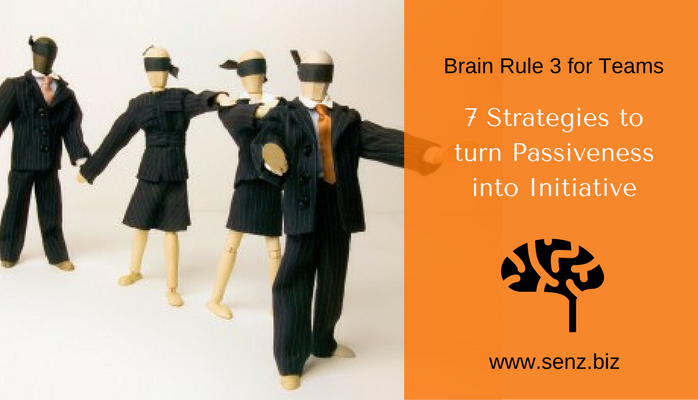
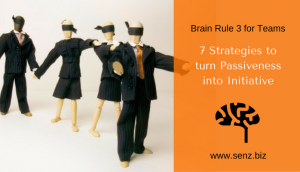
Brain Rule 3 for teams: to Increase the Initiative in your Team
Your employees are complaining that there is a lack of direction. They don’t feel motivated anymore.
Especially now, it’s important that they take initiative and do a better job than ever before.
Brain Rule 3 helps you get the initiative back in your team and increase the productivity.
As a leader you feel that your strategy is clear and you don’t understand why your employees don’t get it. Sales are lacking behind and something needs to happen. Otherwise, it is even necessary to start a re-organization and dismiss people.
You have tried a lot: you spoke with them, gave them clear assignments and maybe even a training. However, nothing really changed.
What is going on?
-Your employees really don’t know the direction. Leaders think that everybody knows it, but this is NOT the case. Research (CIPD) showed that out of 2000 employees only 29% knew the values and strategies of their company.
-It could well be that your team feels that the management goes into a direction they do not want to identify with
-Or maybe some of your team members know that they are nominated to be dismissed
-Or they feel that they are not valued anyhow
In all cases, this means that the connection between your employees and the company is lost. They do not feel that they belong to the company anymore (although they are employed).
You are not meeting one of the strongest forces in universe: ‘social belonging’. The importance of belonging to a group is not always immediately recognized. However, it has disastrous consequences for a company if this aspect is lacking. Our mental system is programmed to belong to a group. If this does not happen, our brain sends signals that feel like a punishment.
This leads to negativity, passivity, feelings of burn-out and demotivation. The loyalty to the company will drop with a negative impact on sick leave, employee turnover and productivity.
This can last for months and even years. No wonder that the clients feel this; with a negative effect on the bottom-line.
So, how can you get all noses into the same direction?
How can you make everybody feel responsible and take action?
How can you turn negativity & passiveness into initiative?
Restore the connection and make use of:
Brain Rule 3 for teams: create a sense of belonging
This is a proven recipe
Click here if you want to know how you can use brain rule 3 for clients.
7 strategies for leaders to turn negativity & passiveness into initiative:
1. Make clear what you stand for and what is your strategy
Communicate this message consistently and show it in actions. In the end, nobody wants to stay behind.
2. Be even clearer about what you expect of your employees.
Tell them what their added value is. Even in a period of re-organisation.
3. Create an enthusiastic (and big enough) group of pioneers, if you want to introduce new strategies.
Others will follow.
4. Mention the commonalities in your team and make clear where you are different than others.
People always prefer their own group above others.
5. Make clear to what group they belong if they take the wished actions.
Make also clear that you are also part of the group and lead by example.
6. Set concrete short-term objectives, so everybody can immediately notice the effect.
This way, you are positively influencing the intrinsic motivation, satisfaction and output. This does not work with abstract objectives that are too far away.
7. Give regular feed-back about the progress that has been made.
This way, people function in the best way (Amabile, Harvard University).
Do you know more strategies? Share them in the comments.
If you implement brain rule 3 in your team, you will immediately notice the impact on the productivity, teamwork and motivation. If this is lacking, this will lead to loads of stress, dissatisfaction and demotivation.
With connecting greetings,
Karin
p.s. Want more strategies to build a leading market position? Click here to get access to our FREE resources with the newest marketing strategies and Senz & Brain Tips
Brain Rule 3 – don’t Introduce your Brand without Using these 3 Strategies
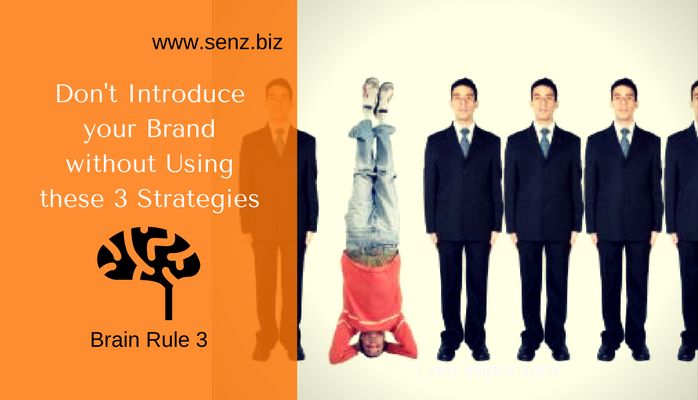
Brain rule 3 – to make clients love your brand
The whole day, your clients are influenced by millions of triggers. So, how do you get into the mind & heart of your clients, if you are one out of millions? How can you make clients love your brand?
Brain Rule 3 plays an important role!
The good news is that our reaction to triggers is programmed in our brain. Scientists do not know yet how it all works, but what they know is that it started long ago.
This makes me think of the following cartoon:
A HR-manager asks a monkey:
Do you want a salary increase of 100%, 20 extra free days, a pension and a bonus of 100.000 Euro?
Or do you want this banana?

Oh dear, the monkey chooses subconsciously for the banana!
We are 100% similar to this monkey. Also we, and our clients, follow our primitive urges.
Successful marketers and leaders acknowledge these primitive urges and deeper needs of people.
This time, we take a look at one of the most important needs of people, one of the strongest powers in the universe.
Why do you hear laughing during comics?
Why do you follow the latest fashion trends?
Why do you take a look at your neighbor if you don’t know how to use your cutlery?
We are programmed to stick together. Every person subconsciously wants to be part of a group, which has something in common; really, also you. ‘Belonging to a group’ and being a valuable group member, is a matter of live or die. If you deviate from the majority, your brain will release a signal, which feels like a punishment.
This is a very important brain-principle, which drives our behavior; and a very strong element to attract clients. Our need to belong to a group is so big that people even decide to connect to sects, radical groups and terroristic gangs. This brings us to Brain Rule 3.
Brain Rule 3: Create a group of like-minded clients
This rule is closely related to Mazlow’s need to belong.
Having solid social connections can be as important to human health and happiness as having food, water, and shelter. Research shows that your odds of survival increase by 50% by having social relationships. This effect is comparable to the effects of smoking and excessive drinking on mortality, suggesting that having quality social ties is vital to our lives.
Okay, let’s list the 3 strategies to tap into the need of social belonging:
1. Focus on a specific group of people and share who they are.
Most likely to buy your products are people who share the same personality, beliefs and the same WHY with you.
2. Make clear what makes you different than others.
People love their own group more than others.
3. Share who is already buying/liking you.
People with the same profile are likely to follow.
This is a great example how Brain Rule 3 works. Want to try?
A hotel tested several messages to make guests use their towel more than once. Which one had most effect?
1. Help the hotel save energy
2. Let’s together save the environment
3. Just like other guests, help to save the environment
4. Just like other guests, help to save the environment (75% of the guests in this room participated in our savings-program)
5. Use our energy sources sparingly, think about our future generation
6. Help to save the environment
This is how people will start loving your brand. They will feel it’s their brand, since it says so much about them. Ogilvy calls them Lovemarks; and Lovemarks transcend brands. They reach your heart as well as your mind, creating an emotional connection that you just can’t live without.
Take a brand away and people will find a replacement. Take a Lovemark away and people will protest its absence. Lovemarks are a relationship, not just a transaction. You do not just buy them, you embrace them passionately. That’s why you never want to let go.
It is clear that using brain rule 3 creates Brand Love and Brand loyalty, which can be very profitable.
Do you know more ways to implement Brain Rule 3: Share them in the comments.
With love,
Karin
#1 Strategy to build a leading market position

A short presentation to show why companies miss to become a market leader. You will also learn how you can add 95% to your influential power.





